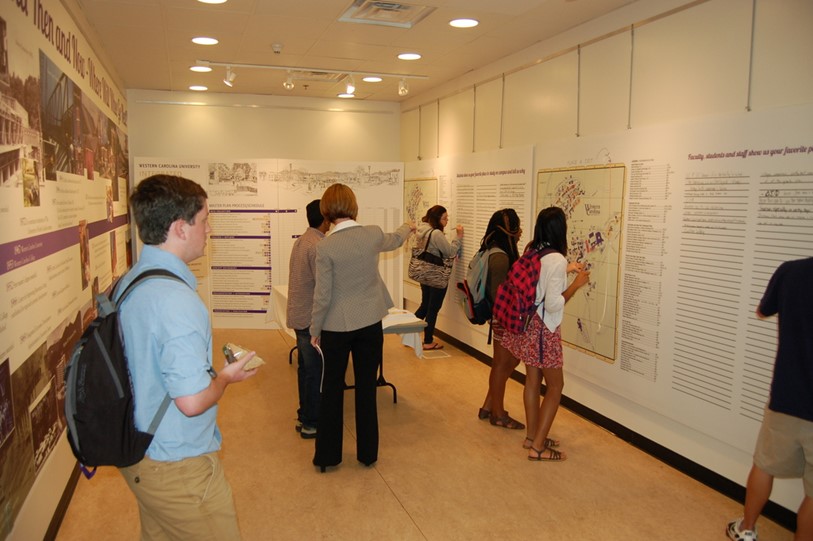6 Most Important Things to Keep Your Master Plan Relevant and Useful
Amid the fury and fray of immediate tasks on any campus, a campus master plan can calm the storm. It provides a long-term vision as to how a campus should grow to meet future needs while also preserving the things most valuable to us, such as culture and history. By definition, master plans provide a big-picture perspective of an institution's countless moving parts, offering a "roadmap" for how those parts will grow and shift over time. Nothing replaces an in-depth analysis such as this.
Yet campuses are constantly changing. New buildings spring up. Traffic is rerouted. Enrollment shifts. Student needs expand exponentially, and new fields of study emerge. The list seems endless, especially when studying the economic impacts of all this.
Despite the calming a master plan offers, it appears there is some room for improvement when it comes to colleges and universities dedicating time for planning. A recent survey by the Society for College and University Planning found that college and university leaders view their overall planning as "fair, at best," and "far from the excellence we might expect from higher education," the SCUP survey said.

-
Lack of time, funds
The survey respondents, which numbered more than 2,000, cited time and financial constraints, complexity, uncertainty and lack of clear vision as some of the biggest challenges to good planning.
Clearly, this list pertains to facilities master planning. Institutions frequently say they lack time and funds for an entire revamp of the master plan. We know that many institutions understand the value of good planning and its ability to add long-lasting value to any campus. If a whole master plan update isn't possible, there are some things that most institutions should review at least every two years. Below are the six most important items to keep an eye on:
- Strategic Goals and the Academic Plan. Arguably, the most important question to ask is, does the master plan still reflect the strategic goals of the institution and, more specifically, the Academic Plan? These often shift faster than we realize, usually as a result of unforeseen situations. Still the bread and butter on most campuses, the Academic Plan should address issues such as programs in the pipeline, departmental growth and decline, on-line learning, strategic realignments, increased competition, branch campus development, and numerous other things - in other words, exactly where the focus should be when it comes to space. Changes like these have a dramatic rippling effect on enrollment, staffing, and facilities, often rendering the master plan out of touch with what's going on. SCUP's survey identified "being agile, managing change, and agreeing on priorities" as the three most important factors to overall success and institutional health. Yet, it further notes "Many institutions struggle to leverage planning into lasting changes because they create plans in a vacuum. They do not grasp the institution's strategic issues." Remaining nimble to manage challenges and changes requires up to date resources. Where does your institution stand?
- Innovation. Consider the impact of recent trends in higher education. We've seen rapid expansion of things such as business incubation, entrepreneurship, light research and patent development and an explosion of maker-spaces. Where are these occurring on your campus? Is there need for consolidation, enhanced security or privacy?
- Space Utilization. Is your space well utilized? What is your optimal level of use? These are important questions to ask. For many colleges and universities, they are a challenge to answer. Many times, classrooms and labs sit empty for large parts of the week, usually Mondays and Fridays. Often, academic spaces are not well-tuned to class sizes. They are either too small or too large. At the same time, you have departments that are expanding, more needs for informal learning areas and other demands for additional space. Over time, day-in and day-out decisions often leave institutions with no overarching command of whether space is optimally used. Invariably, we hear that more space is needed, is that really the case? We find that basic space utilization studies provide vital benchmarking information to create an optimal use of facilities and, therefore, avoid construction and reduce costs. Or, consider what the institution can do on its own, perhaps allocating a portion of annual renovation funds to support an internal space committee effort supported by minimal outside help. Remember, the most inexpensive and sustainable building of all is the one that's never built.
- Enrollment. It's no secret that student population affects every facet of campus life, and enrollment changes affect everything from classroom and housing space to recreation and parking. The rate of change can be impossible to pin down or accommodate, leaving institutions grasping at straws. A well-crafted Master Plan provides flexibility, and identifies the key thresholds that are crossed as numbers go up or down. Getting a handle on enrollment trends, whether driven by long-term demographics or short term economics, can make the difference between chaos and a master plan that works.
- Your Host Community. Perhaps you've seen rapid change to the surrounding neighborhoods. Remember, they have strategic goals of their own, often with corresponding master plans and growth trajectories. As a result, campus life may be changing, strongly influenced by what’s going on just outside the gate. Examples are limitless of issues that affect both town and gown, but without question the two that arise most often involve housing and traffic congestion. That is especially true for institutions seeing residential growth. The ideal master plan is up-to-date on regional economic trends with insight into how they affect the campus community so we can all work better together. If nothing else, make sure your master plan reflects the most recent Comprehensive Plan of the local municipality.
- Funding. Not surprisingly, the SCUP survey ranked "financial constraints" as highest on the list of road blocks to good planning and project execution. Funding is an ever-changing piece of the overall puzzle, and a useful master plan provides a flexible framework to suit funding vagaries and priority shifts. Devised at the "30,000-foot level," master plans embody a vision for ten to twenty years, or even longer. It should never box you in to just one path. A valuable exercise is to scan the funding horizon and update the plan components to take advantage of that funding. Impossible not to notice is that more and more institutions, especially those with strategic residential initiatives, are turning to private sources for development funds and public-private partnerships. Clearly, they provide money with limited or no borrowing. But, what are the challenges they create for the institution’s long-term strategy?

Coming up next: Public-Private Partnerships - How to Prepare Yourself
Our next post will focus on the benefits and challenges of public-private partnerships for construction and the lessons learned after decades of exponential growth.
Written with contribution from Douglas Steele, AIA, LEED AP
